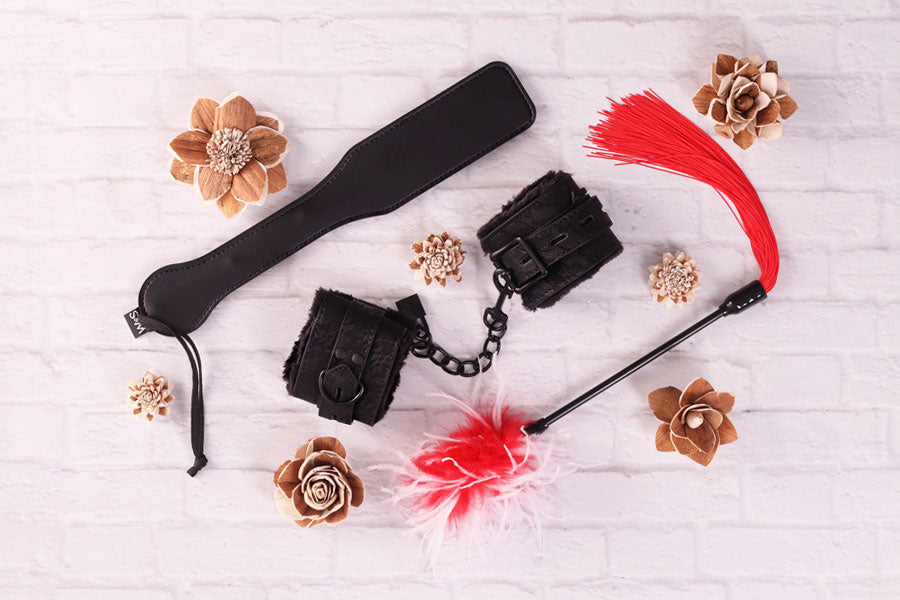Trusted for 25+ Years
How To Female Ejaculate

Dr. Lisa Lawless, CEO of Holistic Wisdom
Clinical Psychotherapist: Relationship & Sexual Health Expert
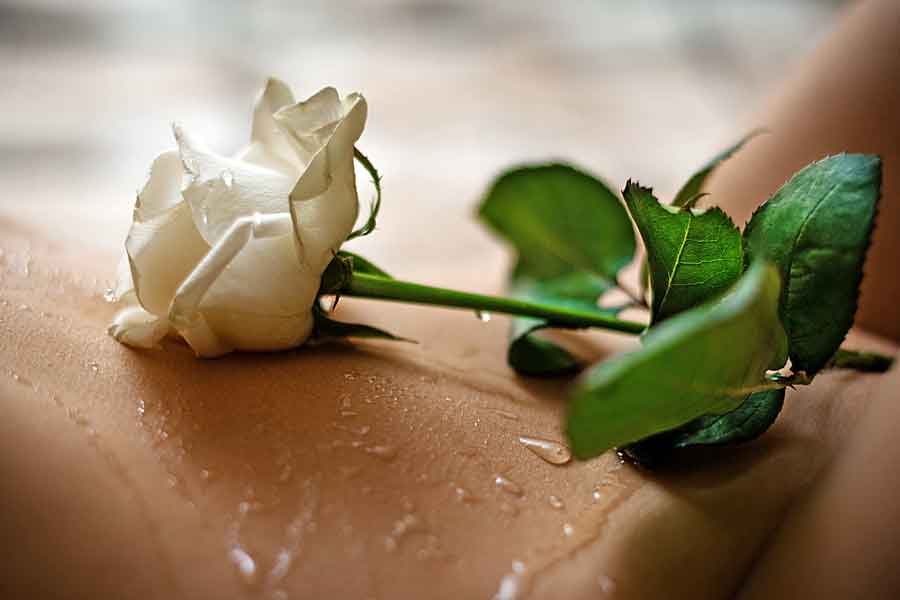 What Is Female Ejaculation?
What Is Female Ejaculation?
There are two types of female sexual fluids. The most commonly known is leukorrhea which lubricates the vaginal walls. It is a thicker fluid and is slightly acidic to prevent infections. Female ejaculation is a thin fluid called a prostatic-specific antigen (PSA) that originates in the female prostate and is pushed out the urethra (where your urine comes out). The female prostate (Skene's glands) is what makes this fluid. Female ejaculation is real; it is not urine, and it is a normal healthy sexual response.
There is a great deal of debate about female ejaculation, not because all women are not capable, but because there has been a genuine lack of understanding regarding women's sexuality in our culture.
Where Does Female Ejaculation Come From?
The female prostate glands that make up part of the G-spot are are the equivalent of the male prostate, and they produce female ejaculate. This fluid comes out of the glands and into the urethra. Female ejaculate can travel out and back up into the bladder, referred to as retrograde ejaculation. Because it can mix with urine, many people think it is only urine and nothing more; however, that is not the case. Just as a man can urinate and ejaculate out of his urethra, so can a woman. The main difference here is that women can do it simultaneously.
- See more on What Is The G-spot, How To Find & Stimulate It.
- To see more about the vagina, see our Vagina Facts Guide.
Female ejaculation can be achieved during an orgasm; however, it is not required for the ejaculate to come out. Amounts depend on various factors such as hydration, the length and intensity of arousal, and how many times it has been expelled in a sexual encounter.

Do All Women Have The Same Anatomy?
Some people erroneously think that not all women can ejaculate because they have tried, and it has not worked for them. However, all cis women typically have the same anatomy, thus, it can be a matter of finding the right technique and overcoming psychological issues that may inhibit a woman sexually.
For skeptics, it is essential to note that there are cases where some women may have female prostate glands that are not functioning correctly or are underdeveloped. For example, in 2002, Emanuele Jannini of L'Aquila University in Italy found that the female prostate glands in women had various sizes and numbers of them. He indicated that, in some extreme cases, they appeared not to be present. However, his study was with twenty women and most of his research was based on vaginal tissue density.
We know that sexual development can vary in some women. For example, in rare cases, hermaphroditism exists (having both testicular and ovarian tissue). There are always exceptions; however, in the case of female ejaculation, and for the sake of addressing the norms, we will be discussing the majority of typical cis females, rather than on rare exceptions. You can see the location of the opening to female prostate glands in the diagram below:
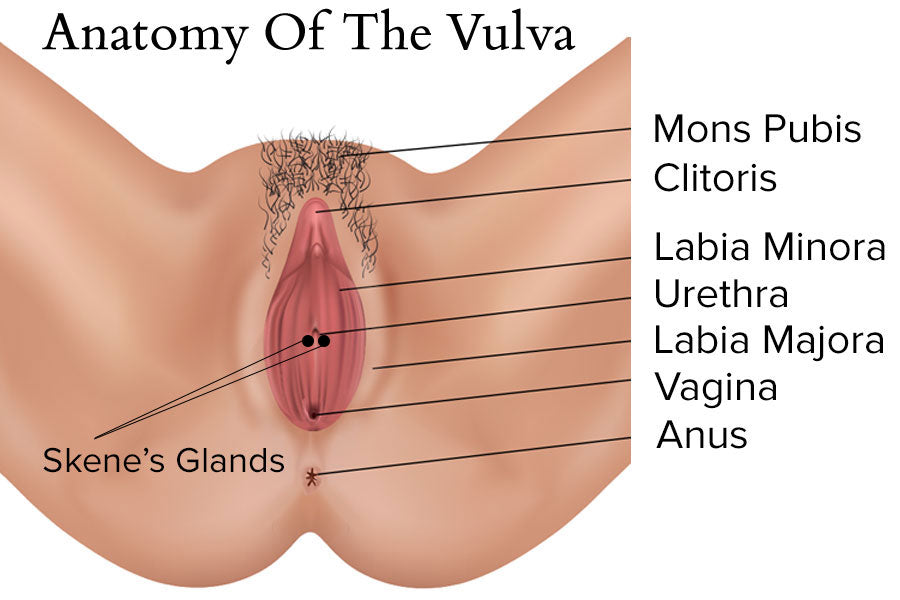
The G-spot
All women have a G-spot; sometimes, it is also referred to as the G-Area or G-Region. Not all women's G-spots are easy to find, especially when they are not engorged with fluid from sexual arousal. In the relaxed state, they may seem nonexistent. This is why many physicians often do not feel them during medical evaluations.
Because some women have thicker tissue in front of the female prostate glands, it makes the presence of it more pronounced and easier to find. It also allows more pressure to be placed on it when a penis, finger, or sex toy is pressing against it. Therefore, it would logically make sense that those women with more tissue in front of the female prostate glands would be more prone to vaginal orgasm than those with less tissue.
A woman will have to determine if she has high or low sensitivity in her G-spot and work with what she has. Should she not find much pleasure through G-spot stimulation, then certainly general vaginal stimulation can still be an overall pleasurable sensation, especially when enhanced with clitoral stimulation.
The Clitoral Complex
A well-known Australian researcher, Dr. Helen O'Connell, feels that the G-spot is connected to the vagina, clitoris, and urethra to make up a clitoral complex. The clitoris is shaped like a wishbone, extends through the vaginal walls, and contracts during sexual arousal. This has led some researchers to think that rather than a G-spot, it is a continuation of the clitoris even though the clitoris is not located there.
However, a Rutgers University study showed through an MRI test that the cervix, clitoris, and vagina stimulated distinct areas of the women's sensory cortex in her brain. Interestingly, each woman's brain sensed the distinct stimulation of each region, including the area of the vaginal wall where the G-spot is located.

What Is In The Female Ejaculation Fluid?
The biggest myth is that female ejaculation is urine, which is not correct. While it can mix with urine, there is a lot of back and forth by people who are confused about exactly what it is and is not. In studies where it has been tested, it has been determined that female ejaculate known as prostatic-specific antigen (PSA) contains glucose and an enzyme, also known as prostate acid phosphatase. This enzyme is a significant component in semen as it comes from the prostate in males. Again, the female prostate in a woman is similar to a man's prostate, which is why the fluid is similar.
In addition, when the prostatic-specific antigen (PSA) was discovered, it contained some elements of urine (urea and creatine). There were typically trace amounts, which suggests that it was simply lining the urethra or a little came out with the ejaculate. Those who have experienced female ejaculation via squirting know that it is a sweet-smelling, watery type of fluid and is not the typical fluid that one sees when a woman is lubricated from sexual arousal or has had an orgasm. This is why there has been such a strong focus on the concept of retrograde ejaculation.
Female ejaculate is relatively consistent in taste, smell, color, and consistency. However, leukorrhea, on the other hand, varies in these factors, and like other fluids in the body, it seems to be influenced by diet and the time frame of the menstrual cycle. Factors that affect the characteristics of the fluid are menstrual cycle, diet, and fluid intake. Some women report that it is sometimes clear and odorless, while others thicker, and more robust in odor. It is safe to say most women's ejaculate will vary with time, even during a single sexual episode.
It is safe for a person to taste their ejaculate and for couples who already exchange body fluids, but not for couples needing to practice safe sex.
Is Female Ejaculation A G-spot Orgasm?
A common mistake that many make is that female ejaculation is a result of a G-spot orgasm. This is not true as all orgasms originate from the clitoris. While the G-spot exists and certainly feels good to be stimulated, there is a chance that women are having an orgasm from stimulation to the clitoral legs. Furthermore, in the case of female ejaculation, it can occur without an orgasm occurring at all. Rather it is just the fluid that builds in her Skene's glands (female prostate) and gets pushed out. Pressure on the G-spot can help that fluid to come out, thus, it is easy to make the mistake of thinking that it is a G-spot orgasm. Learn more about this through our Clitoral & Vaginal Orgasm Guide.
Female Ejaculation Debate
Women who ejaculate have been known to ejaculate in large amounts. A great deal of debate still exists, even between the most well-versed sexual health professionals. Some say that it is the ejaculate and urine mixed. While some say that it is retrograde ejaculation, where the fluid has gone out the female prostate glands and up into an empty bladder or filled the urethra and then comes out; others say that it is a building up of fluid that fills the female prostate glands and then like salvia in your mouth, keeps filling back up at a rapid rate.
Because women can urinate and ejaculate at the same time, sometimes even with the best intentions of simply wanting to ejaculate, women can expel some urine. To reduce this possibility, it may be best to urinate before sexual activity. If sexual activity is prolonged, take a break to ensure urine is expelled if this is a concern.
Female ejaculate is sweet-smelling and does not have a salty taste. Salt from sweat may get into the mix, however, as a variety of fluids can come out during a woman's sexual arousal and climax it can be mixed in with other fluids. Ejaculate is not yellow, so if present, there may be some urine being expelled during climax. Unlike men, women do not have a valve control to shut down the urination process during sexual arousal, so understandably it can get confusing as to what exactly is coming out.
Female Ejaculation Myths
- Female ejaculation does not exist.
- Only rare women can achieve female ejaculation.
- Kegel exercise is the key to achieving female ejaculation.
- Only women with prominent G-spots can achieve female ejaculation.
- Female ejaculation can only be achieved through G-spot orgasms.
- Gynecologists are all educated about this issue and provide women with correct information.
- Female ejaculation is urinary incontinence (peeing).
- Women who have given birth are the only women capable of female ejaculation.
- There is only one way to achieve female ejaculation.
Female Ejaculation Facts
- Female ejaculation fluids come from the female prostate glands (also known as the female prostate glands).
- Women often do not realize that they can ejaculate because they are missing when they can do it.
- There are specific techniques that can be taught to a woman how to do it and how to hold it if she does not wish to ejaculate.
- Women can ejaculate without having a G-spot orgasm and, for that matter, without having an orgasm at all.
- Women can increase the amount of fluid they ejaculate by following specific steps.
- Women can ejaculate multiple times within a short period.
- Female ejaculation is not urine, is much like the consistency of water, is clear in color, and usually smells like nothing or has a slightly sweet scent. After testing, it was found to be similar to prostate fluid found in men. However, it can come out with urine.
Where Does Female Ejaculation Come From?
As discussed, female ejaculation comes from the female prostate glands, which make up the G-spot. The first documentation of these being like the male prostate was in 1672 when Reinier De Graaf described a collection of glands surrounding the female urethra. He described the glands as producing transparent fluid to lubricate the vagina. However, it was not until 2001 when the Federative Committee on Anatomical Terminology finally began to use the term female prostate within their terminology. It just shows how slow Western medicine has been in really giving female sexuality the attention it deserves.
Urethra And Female Prostate Glands
Part of the reason that the G-spot and its functioning was ignored was that it does not impact reproduction, and therefore, it was deemed unimportant. It is truly a significant failure on the part of researchers and physicians that they have seen only reproductive functioning as necessary and other sexual functioning in females as irrelevant. After all, it has been determined that prostate massage in men reduces the risk of prostate cancer. Could it not be just as crucial for women to know if draining the female prostate glands could also provide health benefits? In addition, when the female prostate has become enlarged or caused discomfort, it is called female urethral diverticulum or female prostatitis. Many urinary tract infections (UTIs) have been incorrectly diagnosed and treated due to this disregard for the female prostate.
Even beyond the health aspects of female sexuality, women's sexual pleasure is notable solely for the sake of itself. As more sexual health professionals are pushing for research in this area, we are beginning to see increased education about this, finally giving women the knowledge they need to be rightfully sexually empowered.
The Female Prostate Glands Vs. The Bladder
Because the female prostate glands are only about 1.5 - 2 inches in length, it is reasonable to wonder how up to two cups of fluid can come out. However, as mentioned before, there is a great deal of debate regarding it, even among sexual health professionals. Magnetic resonance images suggest that the theory of retrograde ejaculation may be what is going on inside.
This is where the fluid has gone out the female prostate glands and up into an empty bladder and then comes out. However, it could also be urine mixing with the fluid from the female prostate. This is where the liquid has gone out the female prostate glands and up into an empty bladder and then comes out. However, it could also be urine mixing with the fluid.
There have been clinical tests where a woman's bladder is drained of urine before sexual stimulation and ejaculation. Even though the women's bladders had been drained, they were found to expel anywhere from 50 ml to 900 ml of fluid into a catheter bag. This led researchers to conclude that at least some of the liquid must come from the bladder, such as in the study conducted by Samuel Salama and his colleagues at the Parly II private hospital in Le Chesnay, France. However, even in that study, it was shown that most post-orgasm urine samples contained prostatic-specific antigen (PSA). It is the PSA that many researchers say is the true female ejaculate, which is produced mainly by the female prostate glands. Other researchers show more urine with smaller amounts of prostatic secretions.
Research Is Needed
Some researchers, like Dr. Gary Schubach, have stated in his research that the majority of female ejaculation originates in the bladder. Still, the expelled fluid is not quite normal urine. A woman's bladder was emptied using a catheter before orgasm in his research. During orgasm, a catheter was in place and connected to a collection bag. Analysis of the fluid expelled during orgasm is the basis for his claim. The oversight of this approach is that the bladder sphincter is normally closed. If it were not, liquid in the bladder would come out at any time. Creating an artificial passage and collecting the fluid expelled from the bladder during pelvic muscle contractions is just part of the picture and does not explore if, during orgasm, this passage exists typically, even if only for a moment.
Some speculate that female ejaculate originates from the kidneys in large volumes, which could hold some validity in that magnetic resonance imaging has captured increased fluid in the kidneys when a woman is aroused. Combining this fluid with the liquid expelled from the female prostate glands would complement the lab tests on the fluid. Therefore, this is a theory that should be delved into more through testing, such as ultrasound monitoring.
The bladder theory is just one of several and is assumed to be true because doctors are confused about how the fluid can come from the female prostate glands as it could not hold as much as 2 cups of fluid. Thus, the reason that it must come from the bladder. However, it may come from the kidneys and female prostate glands. It is still controversial, and because there have not been any recent studies, it is still difficult to say which theories are correct with 100% accuracy. Even the latest studies only measure the fluid and are not comprehensive, with many women participants or combined with fluid testing and internal imaging.
How Much Ejaculate Comes Out?
Most women can squirt out as much as 0.5 - 2 cups of fluid when ejaculating. How much is female ejaculate and how much is urine cannot be determined unless tested. Fluid amounts can be affected by how hydrated a woman is, how much she pushes while ejaculating, and other factors. The more fluid, the more chances prostatic-specific antigen (PSA) are mixed with urine. The female prostate comes in many different shapes and sizes. Still, most women have prostate glands that are positioned near the external urethra and can expel similar amounts of fluid.
The amount of fluid that is expelled varies from woman to woman and from sexual experience to experience. It can be a mere dribble to more than two cups. Two cups is a lot of liquid, but it has been documented; however, many say this amount of fluid is only mixed with urine.
Preparation
This key to female ejaculation is recognizing that it feels like you may have to urinate as it is coming out of the urethra from the female prostate glands. Research has shown that generally when sexually stimulated, the G-spot renders a strong feeling of urinating. This feeling usually lasts around a few seconds, and sometimes longer, before it changes into sexual enjoyment. If a woman feels as though she has to urinate (especially at the height of orgasm) and pushes outward using her vaginal muscles (as is the natural reflex) while ignoring the fear of urinating, female ejaculation will most likely occur.
When faced with this sensation, most women hold back as their natural sexual response of releasing the vaginal muscles and pushing into the pleasure is avoided to keep from urinating on their partners. This be another factor in why so many women never experience an orgasm, as they may fear urinating during sexual activity along with other factors.
Why Some Women Discover It On Their Own
You may be wondering why some women have accidentally discovered female ejaculation, and others never do. It is often quite by chance that during a sexual experience, a woman will begin pushing during the height of her orgasm, risking possibly urinating, passing gas, or defecating, as opposed to a woman that simply experiences the orgasm while maintaining control over their urethra by not pushing.
One could theorize that it is due to various reasons, i.e., a woman's personality, physical sensitivity, or even social and environmental factors. The reasons may often be different, from woman to woman; however, most women are not aware that they are capable because of the lack of education to women around their sexuality and sexual health.
Waterproofing For Female Ejaculation
To protect your bedding or furniture, consider some of the following ways to prevent things from getting wet.
Waterproof Throws
We have created beautiful, highly functional blankets with a waterproof liner inside and washable. See our waterproof blankets.
Towels
Make sure that they are thickly layered to absorb all of the liquid and not allow it to leak onto a nice bed, sofa, etc.)
Extra Large Underpads
You can find them in the drug store near the incontinence products, as they are intended for use by those with incontinence.
Plastic Sheet
A spare shower curtain, garbage bags, or other plastic covering can be placed under one towel or sheet.
Bathtubs
Ejaculating in these makes clean-up relatively easy.
Waterproof Air Mattress
This or any waterproof surface such as a linoleum floor will do.
Optimal Environmental Conditions
Here are some suggestions to make the environment conducive to the erotic session of female ejaculation.
A Waterproof Environment
Having a waterproof environment allows the psychological inhibition of thinking that you will make a mess, eliminated. It also allows for easy clean-up.
Bathroom Time Beforehand
Using the bathroom beforehand to urinate, defecate or pass gas will also ease inhibitions.
Low Stress
Especially during the experimental phase of trying female ejaculation, ensuring that a woman's stress levels are low is essential. When a woman is stressed and unable to relax and let go, she is often less likely to have an orgasm, let alone experience female ejaculation. Women generally have emotional associations with sex, and if they feel uncomfortable, a sexual release of any sort is less likely to occur. Setting a relaxing mood with a hot bath, scented candles, sensual massage are all ways you can create this.
Unlimited Time
If a woman feels rushed, particularly around trying something new, she may be less likely to relax and let herself get in tune with her sexual responses. If this is one of the first few times you are trying out female ejaculation, make sure to have a lot of time to get to that place of heightened sexual ecstasy.
Encouraging Partner
Particularly during sexual penetration, a woman feels naturally vulnerable. If her partner puts too much pressure on her to perform, it can backfire just as with anyone. A partner's role is essential and often crucial to a woman's sexual pleasure levels.
Soft Lighting
This may or may not make a difference to some women; however, due to the high percentage of women that struggle with self-esteem and body issues, having soft lightening may aid in her feeling more relaxed; especially when so much attention will be paid to her. This may not be as important after feeling more comfortable performing female ejaculation, but it is worth considering when first experimenting.
Music
Music is one of the most powerful influences in our environment. Sensual musical selections that promote a woman to feel erotic, relaxed, and expressive are suitable mood enhancers. No matter what you choose, make sure it will bring out the relaxed, sensual side as that is the focus.
G-spot & Clitoral Toys
Having toys in any sexual encounter can be a wonderful treat. Particularly toys that do an excellent job in making sexual pleasure better. Using a G-spot vibrator along with a clitoral vibrator or clitoral suction stimulator can be highly effective. You can also use dual action vibrators which do both.
Finger & Hand Techniques
Finger and hand techniques effectively stimulate the female genitals to achieve female ejaculation. You will want to wash your hands well and ensure that you do not introduce harmful bacteria into the vagina, particularly the urethra. It is always good to trim fingernails not to cause pain if using finger play to stimulate sexually. To see specific finger techniques, make sure to see our guide Fingering Tips For The Vagina.
How To Female Ejaculate Step-By-Step
- Make sure that you have an environment that will be relaxing and allow for an erotic adventure. This can include such things as lighting candles, playing sensual music, having your play area comfortable and private, wearing seductive clothing such as lingerie, and filling the air with an exotic fragrance.
- Empty your bladder from all urine, expel gas, or defecate if you need to. This will ensure that when you push the fluid, you will not feel inhibited in any way and can let go.
- Creating a relaxing atmosphere can also include sensual foreplay with yourself. Often when people masturbate, they forget to caress and seduce themselves. Get into the mood doing such activities as lightly caressing your body, breathing deeply, and becoming incredibly aware of the pleasure you are giving to yourself and how good it makes your body feel.
- Make sure to have enough time to let go and not feel rushed.
- You will want to wash your hands well to make sure that you do not introduce harmful bacteria into your vagina or introduce it into the urethra. Trim fingernails not to cause pain if using finger play to stimulate sexually.
- Use a generous amount of lubrication, even if you are very lubricated already. Another good tip regarding this is to warm lubrication slightly before applying it. When it comes straight out of the dispenser, it can be cold and seem uncomfortable when applied to the genitals.
- It was interesting to note upon interviews that most women found it easier to experience female ejaculation when having their thighs upward against their abdomen (knees against the rib cage) to maximize the opening of the vagina. Various sexual positions will support this. This is most likely because it allows the combination of the G-spot to be more easily accessed, the urethra to be more easily opened (with pressure on the bladder, female prostate, and the full opening of the vagina.
- Stimulate the clitoris to awaken arousal within the vagina using a water-based lubricant and anything from fingers to a vibrator.
- Introduce a shaft-like object such as a finger, dildo, or G-spot stimulator to stimulate the female prostate glands. Use pressure to massage the G-spot (usually 2-4 inches inside the vagina on the top).
- Stimulating the G-spot may begin to cause you to feel the need to urinate. Do not fight this urge if you want to ejaculate. Let it continue to build, relax, take deep breaths and allow the sexual excitement and feeling of needing to urinate to build.
- If you find a particular area that is most exciting to stimulate during this process, make sure to directly enable it to get yourself to the most heightened level of arousal that you can achieve.
- Make sure to allow yourself time to enjoy this and not rush to the female ejaculation goal. The more you build your sexual excitement, the more liquid will be expelled upon release.
- Think positively; do not get caught up in pressuring yourself to do this. Assure yourself that this may take practice and time, and relax. Don't be afraid as this is all healthy, expected behavior, and the true goal is simply to embrace your sexuality and pleasure and nurture yourself.
- As you feel your orgasm building, you will want to stay relaxed and go with it. Let it take you over the edge.
- The fluid through the urethra will initially feel exactly like when you start to urinate. The reflex to stop by contracting your pelvic floor muscles (Kegel muscles) will immediately stop the ejaculation, so it is vital to relax and allow the fluid to pass.
- When you are at the height of your orgasm, relax your bladder and bear down and push hard as if you were moving a bowel movement with force or giving birth to a child. (Often, during childbirth, women urinate, pass gas, or defecate as they are pushing out with that same surrender).
- Usually, this is when the gush of fluid will pass out of you. Sometimes during this moment, you can get so caught up in the release that you may not even be aware of the fluid coming out of you or to what degree it is coming out.
- If you ejaculate, you will most likely feel a more intense release than ever before, and if you do not have fluid come out, remember that nothing is lost. The pleasure that you just derived is the goal.
- Being able to ejaculate may take practice and patience.
- Ejaculating does not have to be the end of the sexual experience; you may continue to have multiple orgasms and ejaculations with further sexual play.
Additional Tips With A Partner
- Remember to be careful and think about safe sex. The fluid may spray around like a fountain a few feet high. You will want to avoid accidentally getting it on your lips and in your eyes regarding STD protection.
- Fingerplay from a partner is most effective when using an index finger. The best way to stimulate the inside of the vagina is along the upper wall. Create a hook with your index finger hand palm side up, and make the motion one makes to say, "come here." You can do the same thing with one or two fingers inside the vagina. Massaging the upper wall of the vagina, press your fingers up and curl them forward toward the front.
- Stimulation from your partner using a dildo is a great way to achieve female ejaculation. Sometimes this may require more verbal communication as you cannot be sure that the dildo is stimulating the G-spot the way your partner will be most stimulated. She needs to let you know what feels best. When using a dildo or long shaft-like vibrator, you should note that preference depends on the woman. Some women may prefer for the tip of a vibrator to be against their G-spot, while others may prefer a full feeling from a dildo. The pressure created by large dildos or an entire hand (fisting) may stimulate the urethra enough to cause an ejaculation, even if that is not the intent.
- Encourage your partner by saying such things as: "you're getting there, you're doing great, don't worry, relax and let it come" or other similar praise and reassurance. Your partner may need reassurance that if she gets you all wet as she ejaculates that you will not be upset and that you are excited about it. Let her know that you are comfortable with her ability to ejaculate and that you find it arousing.
- When your lover has ejaculated, celebrate with her. Don't make fun of her, or it may be the last time she will want to ejaculate, at least with you there.
Female Ejaculation Challenges
Things that can inhibit a woman from achieving female ejaculation can vary. Here are a few examples of myths, interfering factors, and false belief systems, as well as physical challenges to achieving female ejaculation:
- Feeling guilt for allowing herself to have sexual pleasure by perceiving it as wrong.
- Feeling selfish for receiving pleasure from a partner. Many women are conditioned to be pleasing and disregard their own sexual desires and needs.
- Feeling that her ejaculate fluid is repulsive.
- Afraid that she will be inadequate if she tries and cannot do it.
- Feeling embarrassed for not knowing about it before and suddenly feeling naive about her sexuality.
- Worrying that it may hurt or cause damage to her genitals.
- Worrying that she may never be able to control whether she wants to ejaculate in the future again, left with only being able to have an orgasm and gushing out fluid even when she does not desire to.
- Making the error of trying too hard and not allowing herself to relax enough to open the urethral tube to allow the fluid to come out.
- Having sexual abuse issues that have not been resolved, or maybe resurfacing and need attention.
- Having relationship conflicts that do not allow her to feel uninhibited sexually or create a loss of sex drive.
- Holding back during sex and refraining from surrendering to sexual pleasure.
- Clenching muscles during sex to keep any liquid from being expelled.
- Not giving oneself time to masturbate alone to learn one's own body and natural sexual responses.
- Feeling alone, ashamed, confused, humiliated, defective, and sexually abnormal.
- Having partners who would emotionally and physically reject them for this behavior.
- Not finding the right sexual stimulus or combination of sexual stimuli to aid her in reaching an orgasm.
- Not having an environment that is conducive to relaxing her enough to reach that point of letting go.
- Not having enough time to reach the level of arousal to achieve it.
- Being in an awkward position that is not conducive to providing maximum sexual pleasure.
- Having a medical condition or factor that would inhibit sexual responsiveness (such as a hysterectomy c-section that may have damaged sensitive nerve endings responsible for sexual stimulation).
- Having underdeveloped female prostate glands.
- Having a side effect from medication or herbs may decrease the blood flow to the genitals or decrease libido.
- Experiencing pain from a Urinary Tract Infection (UTI) or other medical condition.
- Female sexual dysfunction.
How To Stop Female Ejaculation If Undesired
Some women experience female ejaculation when they do not want to. The best way to stop it is to refrain from pushing outward during an orgasm. Women can also clench down on the urethra by using their Kegel muscles, much like they would stop the flow of urine. The more developed the Kegel muscles, the easier it will be to control it. See How To Do Kegel Exercise for more information.
Is It Safe To Female Ejaculate During Pregnancy?
You will need to talk with your OB/GYN about such matters, as each pregnancy can be different and come with various risks. For women who require bed rest or decreased activity during their pregnancy due to health risks, you will, of course, want to reduce the intensity of your sex life as well.
To expel the ejaculate, some women need to bear down and push. Of course, some women have it dribble out, others may have to exert themselves, and that is when there may be possible problems that may arise, especially if the pregnancy is a high risk or if you are about to give birth. See our guide on How To Talk To Your Doctor About Sex for more help with this.
Exploring Women's Sexuality
Empowered women accept that being feminine means embracing our sexuality, our bodies, and most certainly our bodily fluids. Sweat, vaginal lubrication, menses, ejaculate, salvia, urine, and other bodily fluids are not only practical and serve a purpose but are most definitely part of the reality of our beautiful bodies.
Many men get the idea that they are sexually potent when producing large quantities of semen or shooting ejaculate out of their penis. Men ejaculating on the face, in the mouth, and on their partner's body are often seen as sexy, and women can appreciate this aspect of themselves as well.
When a woman or her lover cannot embrace her body or the fluids within, she will undoubtedly have challenges allowing herself to ejaculate, let alone enjoy sexual activity to the fullest.

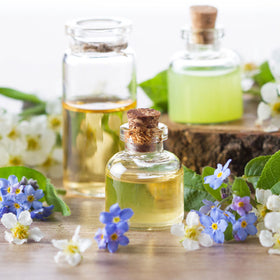
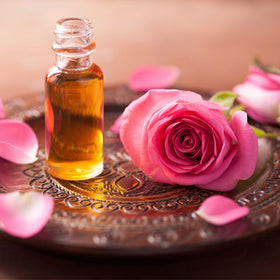
 What Is Female Ejaculation?
What Is Female Ejaculation?
